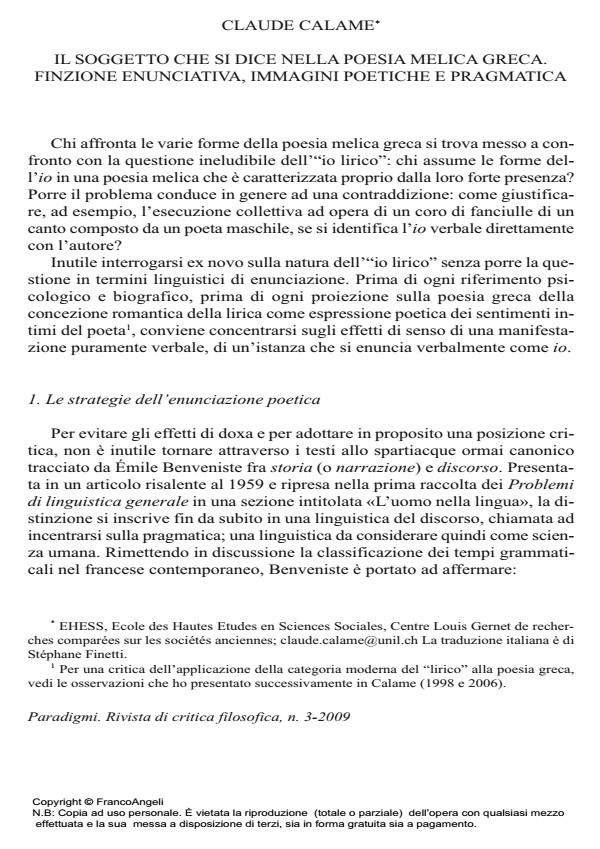Il soggetto che si dice nella poesia melica greca. Finzione enunciatva, immagini poetiche e pragmatica
Journal title PARADIGMI
Author/s Calame Claude
Publishing Year 2009 Issue 2009/3
Language Italian Pages 15 P. 85-99 File size 85 KB
DOI 10.3280/PARA2009-003007
DOI is like a bar code for intellectual property: to have more infomation
click here
Below, you can see the article first page
If you want to buy this article in PDF format, you can do it, following the instructions to buy download credits

FrancoAngeli is member of Publishers International Linking Association, Inc (PILA), a not-for-profit association which run the CrossRef service enabling links to and from online scholarly content.
The Singing Subject in Greek Melic Poetry. Enunciative Fiction - Poetic images and Pragmatics Starting from Benveniste’s analyses of historical enunciation, the nature of pronouns and the subjectivity of language, this essay focuses on that the kind of subjectivity implied in much Greek lyric poetry, especially in Pindar. By means of discursive tools, the narration builds an exclusively verbal image of the "I", which comes before any reference to elements external to the text. In this way, the "I" stands for an enunciative, pragmatic and polyphonic subject: it is, indeed, the actor (singer, tragic actor, choral group) of a ritualized situation. This performative identity is different from the author of the written text. In Greek poetry, the written text is above all a speech-act, mostly a song-act. This raises the problem of the difference - and of the relation - between the author’s biographic subjectivity and the identity created by the linguistic devices in the text. Using different images: chariots, ceremonial processions, Calame’s analysis focuses on the metaphorical identification between poetic song and journey.
Key words: Enunciation, Image, Metaphor, Poetry, Pragmatics, Subjectivity.
Parole chiave: Enunciazione, Immagine, Metafora, Poesia, Pragmatica, Soggettività. Vedere come.
Calame Claude, Il soggetto che si dice nella poesia melica greca. Finzione enunciatva, immagini poetiche e pragmatica in "PARADIGMI" 3/2009, pp 85-99, DOI: 10.3280/PARA2009-003007